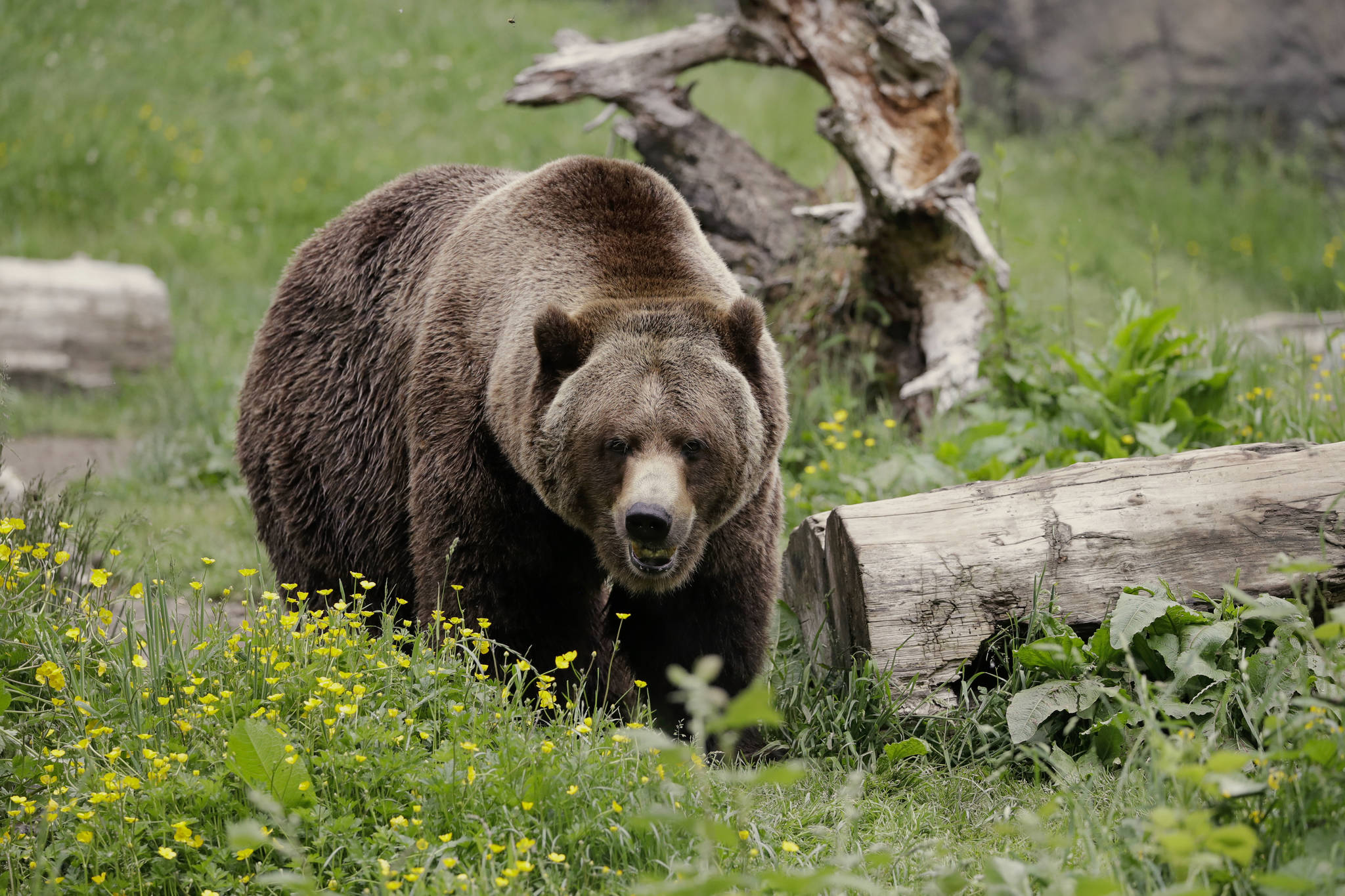By NICHOLAS K. GERANIOS
Associated Press
SPOKANE, Wash. — The forested mountains in and around North Cascades National Park in north central Washington state have long been considered prime habitat for threatened grizzly bears, so environmental groups are upset the Trump administration scrapped plans to reintroduce the apex predators there.
U.S. Secretary of the Interior David L. Bernhardt on Tuesday announced his agency will not conduct the environmental impact statement needed to move forward with the idea.
That drew rebukes from conservation groups, who have worked for decades to grow the tiny population of about 10 grizzlies in the vast North Cascades, where writer Jack Kerouac spent the summer of 1956 as a lookout for wildfires.
“Grizzlies have been an integral part of the North Cascades ecosystem for 20,000 years but are now one of the most threatened populations in North America,” said Rob Smith, northwest director of the National Parks Conservation Association. “This purely political decision ignores science, Park Service recommendations and overwhelming public support.”
He noted that former Interior Secretary Ryan Zinke supported grizzly recovery efforts there before leaving the Trump administration.
In 2015, under President Barack Obama, the federal government began an environmental impact statement planning process on restoring the bears in the North Cascades.
Grizzly bears play a vital environmental role in the park and the broader ecosystem, Smith said. But there have been no verified sightings in the region in several years, raising concerns about their survival.
While Bernhardt pointed to local opposition to introducing bears into the North Cascades, Smith said a majority of Washington residents have supported the proposal in the past.
The Center for Biological Diversity also called the decision political.
“Grizzly bears only occupy less than 5% of their historic range, and the North Cascades presents prime habitat for grizzly bears,” said Andrea Zaccardi, an attorney with the group. “Their recovery there is critical to the overall recovery of grizzly bears in the U.S.”
The center contends the North Cascades could support more than 700 grizzly bears over 9,000 square miles of habitat. About 41% of the recovery zone is within the national park, and about 72% has no motorized access.
But Rep. Dan Newhouse, a Republican who represents central Washington state in Congress, said local residents don’t want a larger population of grizzlies there.
“This announcement is welcomed by my constituents in central Washington who have consistently shared my same concerns about introducing an apex predator into the North Cascades,” Newhouse said.
Bernhardt’s announcement came at a meeting in Omak, Washington, 100 miles (161 kilometers) east of the national park, where opposition to the bears is strong.
Bernhardt said the Trump administration will continue to focus on growing grizzly bear populations across their existing range, which includes parts of Montana, Wyoming, Idaho and eastern Washington state.
The recovery of grizzly bears in the lower 48 states is already an amazing success story, the agency said.
The Greater Yellowstone Ecosystem has been the primary focus of grizzly recovery efforts to date, and grizzly populations have increased to about 700 bears there since the animals were listed as threatened under the Endangered Species Act in 1975.
The environmental group Conservation Northwest was disappointed by the decision, but did not think it was the final word on the bears.
“We are still confident they will be restored there,” spokesman Chase Gunnell said.
Federal grizzly bear recovery plans are mandated by the Endangered Species Act and require grizzly recovery in the North Cascades, Gunnell said.
It is the largest federally designated Grizzly Bear Recovery Zone and the only such zone outside the Rocky Mountains, he said.
North Cascades National Park and surrounding back country areas also receive far fewer visitors each year than places such as Yellowstone or Glacier national parks, where the majority of the nation’s grizzlies roam, Gunnell said.
Despite the excellent habitat, recovery of the animals in the North Cascades will require that some bears be imported into the back country, Gunnell said.
Given their isolation from other grizzly populations, their very slow reproductive rate and other constraints, the tiny population of North Cascades grizzly bears is considered the most at-risk bear population in the United States, Gunnell said.
Grizzly bears were listed as a threatened species in 1975. They have slowly regained territory and increased in numbers in the ensuing decades.
An estimated 50,000 bears once roamed the lower 48. Government-sponsored programs led to most being poisoned, shot and trapped by the 1930s. Now the largest concentration of grizzlies, numbering less than 1,800, are around Montana’s Glacier National Park and around Yellowstone National Park.
Grizzlies did win a victory over the Trump administration on Wednesday. A U.S. appeals court ruled that a federal judge was right to restore protections for grizzly bears in the Yellowstone region of the Rocky Mountains, after federal officials sought to turn over management of the animals to states that would have allowed them to be hunted.

